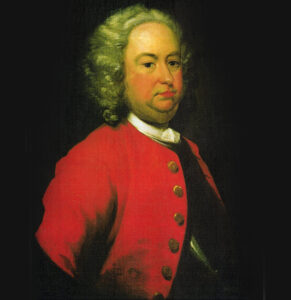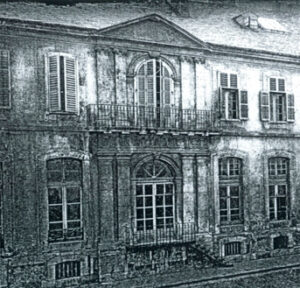We are a group of likeminded individuals who came together in 2013 to collect and collate the history and heritage of Manorhamilton and surrounding areas. We have collated the history of every house and business in the town based on oral interviews on a street by street by basis.
Manorhamilton Historical Society Committee:
Chairman: Gerry Creamer
Secretary: Anne Farrell
Treasurer: Sean Mc Morrow
Committee: Margaret Connolly, Maureen Keaney, Dominic Rooney, Oliver Haslette, Conor Maguire, Bernie Mc Gauran, Harold Thompson, Mary Mc Morrow, Barbara O Brien, PJ Leddy
Manorhamilton Heritage Trail Booklet
Notable Manorhamilton People of the Past
Publications
St Joseph’s College Manorhamilton & Educational Initiatives 1930-1970, Proinnsíos Ó Duigneáin
North Leitrim in Famine Times, Proinnsíos Ó Duigneáin
North Leitrim in Land League Times 1880-84, Proinnsíos Ó Duigneáin
The Priest and the Protestant Woman, Proinnsíos Ó Duigneáin
North Leitrim: The Land War and The Fall of Parnell, Proinnsíos Ó Duigneáin
The Sligo-Leitrim World of Kate Cullen 1832-1913, Hilary Pyle
The Wynnes of Sligo & Leitrim, Winston Guthrie Jones
From Rosclogher to Rooskey: The Leitrim Story, Lorcán Ó Rúnaí
The Life & Times of Sir Frederick Hamilton 1590-1647, Dominic Rooney
Captain Francisco de Cuéllar: The Armada, Ireland and the Wars of the Spanish Monarchy 1578-1606, Francis Kelly
Sean Mac Diarmada: The Mind of the revolution, Gerard Mc Atasney;
Sinn Féin: The First Election 1908, Ciarán Ó Duibhir
Manorhamilton Workhouse 1842-1936, Manorhamilton Historical Society
Thomas Corscadden 1837-1919 and the Land War in Manorhamilton, Co. Leitrim, Maureen Keaney
Gordon Wilson: An Ordinary Hero, Alf McCreary
Sit Down Guard!, Eamonn Gunn
The Castle Street Band Commemorative Booklet
Dromahaire-Stories & Pictures, Proinnsíos Ó Duigneáin
Mullies – A History, Mullies Organising Committee
Killargue: History & Heritage, Padraic Cullen
Glenfarne: A History, The Glenfarne Historical Society
Carrigeengeare National School 1839-1966, The Carrigeengeare School Reunion Committee
Lurganboy: A Social History, Lurganboy Development Association
Rossinver Braes, Cumann Seanchaís Ros Inbhír
St. Osnat’s Church Glencar 1846-1996, Brendan Rooney
North Leitrim Glens: Stroll and Hill Walks in North Leitrim and Sligo, David Herman
The Leitrim Guardian Magazine
The Diocese of Kilmore 1100-1800, Liam Kelly
The Diocese of Kilmore 1800-1950, Daniel Gallogly
More Resources
Leitrim Guardian magazine www.leitrimguardian.ie
Leitrim County Library http://www.leitrimcoco.ie/eng/Community-Culture/Library/
Leitrim Genealogy Centre www.leitrimroots.com
Breifne Historical Society http://www.breifnehistory.com/
Leitrim Old Irish Photos https://www.facebook.com/search/top?q=leitrim%20old%20irish%20photos
Carrick on Shannon Historical Society https://www.facebook.com/Carrick-on-shannon-and-district-historical-society-152105094825023/
National Archives Census 1901/1911 http://www.census.nationalarchives.ie/
National Library Ireland https://www.nli.ie/
Irish Genealogy https://www.irishgenealogy.ie/en/
National Folklore Collection www.dúchas.ie
Bureau of Military History https://www.militaryarchives.ie/collections/online-collections/bureau-of-military-history-1913-1921
Funded by Dept :
Department of Rural and Community Development / Government of Ireland and Leitrim County Council through the Town & Village Accelerated Measure



Manorhamilton, an Historic Gem in the North Leitrim Glens
Nestling at the centre of the North Leitrim Glens sits Manorhamilton, a town rich in history and heritage and surrounded by the unspoiled beauty of lovely Leitrim. On an elevated site overlooking the town stands the ruins of Hamilton’s Castle. This is now the only visible reminder of Sir Frederick Hamilton, from Paisley in Scotland, who, in March 1622, was granted 6500 acres of Leitrim land in this area and stamped his name on our town. Today after almost 400 years, its ruins are an imposing structure and remind us that from here sprung our town.
The death of Sir Frederick in 1647 and the burning of his castle in 1652 brought changes.The marriage of Hannah, Sir Frederick’s grand-daughter, to Sir William Gore, carried the Manorhamilton portion of the estate into the Gore family. It was Hannah and William’s son, Sir Ralph Gore, who built the Military Barracks in Manorhamilton in 1716. Situated within the 17th century Star Fort, it was part of the British barrack building scheme of the 18th century.Following its demolition, the site was used for the building of the present Church of Ireland in 1783. This replaced a much smaller church on Old Church Street.Sir Ralph Gore’s nephew, also Sir Ralph, inherited the estate in 1746. He commissioned a surveyor called James Leonard, to produce the earliest known maps of Manorhamilton. In February 1759, Sir Ralph Gore sold the 5393 acre Manorhamilton estate to his cousin by marriage, Nathaniel Clements, whose son, Robert, became 1st Earl of Leitrim in 1795
1800’s Manorhamilton must have been a hive of activity.The Methodist Community lead the building boom of that period with the construction of theirchurch in 1804 on a newly opened street. This little street gem we now call the Teapot Lane. The modestly-sized Catholic Church, which in later times became St. Clare’s Hall, arose in 1810 and served the spiritual needs of its community until the building the present beautiful cut-stone church in 1883.Although court sessions, in one form or another, were held in Manorhamilton from the time of Frederick Hamilton, the town saw its new Courthouse open its doors in 1819. From that time until it was vacated in 2001, this building served the locality not only as a courthouse but also, at times, as a place of entertainment, a library, a bank, a voting centre and was home to a variety of offices. A split in the Methodist Community resulted in the building of another church in 1821. Thisis now the unique arts and entertainment venue, The Glens Centre. Nathaniel, 2nd Earl of Leitrim, stamped his presence on the town in 1834 with an impressive new Market House adorned with the coat of arms of the Clement family. The Great Irish Famine of 1845-1849 is mostly remembered for the misery and devastation it caused but it also brought business opportunity and employment to towns where workhouses were located. Manorhamilton Workhouse opened its doors for the reception of paupers in December 1842 and within a short time another new street was developed to facilitate this grim building. The coming of the Sligo,Leitrim & Northern Counties Railway to Manorhamilton on December 1st 1880 was indeed the life line of business in the town until its closing on September 30th 1957.
Having put the frenetic activity of the 1800’s behind, the town settled into a more gradual expansion which affected all facets of life – health, education, employment, housing and recreation. As early as 1907 a new facility for sport became available when Henry John Clements leased the Bee Park to the North Leitrim Agricultural Society on condition that it be used as a showground and recreational park. That condition still continues to be honoured. Following the Anglo Irish Treaty in 1921, County Boards of Health were established and 1954 saw the building of Our Lady’s Hospital on the Workhouse site. In 2007 the impressive HSE offices occupied another section of that historic site. Primary and Secondary schools became the norm for the rural population and in 1972 St. Clare’s Comprehensive School furthered education in North Leitrim. New housing estates have now extended the town’s boundaries and factories provide employmentfor our own people and for the many from other countries who have made their homes here. Tourism is promoted and our visitors enjoy excellent accommodation and fine dining while absorbing the beauty of the surrounding countryside. Progress is a wonderful thing and in Manorhamilton that progress has never failed to nurture and preserve the memories and treasures of our historic past.









